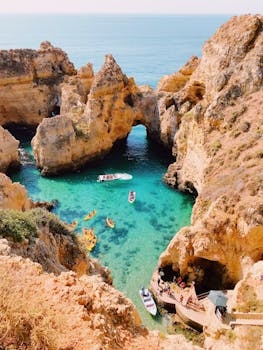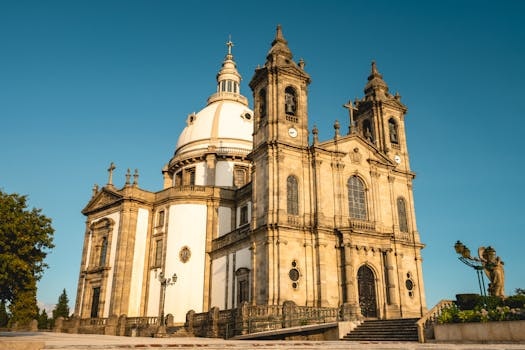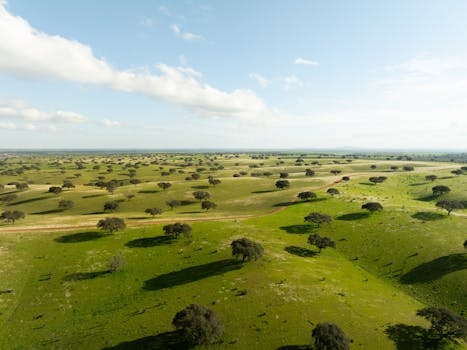Portugal Food Guide
Content Information
Recently updated🔥Current Food Trends 2025
What's happening in Portugal's culinary scene right now
Portugal's culinary landscape in November 2025 celebrates the Michelin Guide Portugal 2024 featuring 32 starred restaurants including three two-star establishments (Belcanto in Lisbon, Ocean in Algarve, Vila Joya in Algarve). Portuguese gastronomy renaissance led by chefs like José Avillez revitalizes traditional dishes with modern techniques while preserving heritage. Lisbon's Time Out Market and Porto's Mercado do Bolhão showcase artisan producers and traditional petiscos (tapas). Sustainable fishing initiatives protect Atlantic waters, emphasizing sardines, octopus, and bacalhau (salted cod) traditions. UNESCO Creative Cities of Gastronomy include Braga (2023), joining Évora and Amarante in protecting culinary heritage. Douro Valley wine tourism peaks with port wine cellars offering tastings in historic lodges. Pastel de nata originated at Lisbon's Pastéis de Belém (1837) maintains secret recipe with 150+ daily production. November 2025 marks São Martinho (November 11) celebrating chestnuts, wine, and seasonal harvest. Alentejo's montado (cork oak ecosystem) produces Iberian black pork (porco preto) with protected designation. Portuguese food tourism focuses on rota do bacalhau, rota dos vinhos, and pastry routes through historic convents.
Food Safety Tips
Essential food safety information to help you enjoy Portugal's cuisine safely and confidently.
Tap water is generally safe to drink
Tap water is safe to drink in most urban areas. Bottled water recommended in remote locations.
Be cautious with custard pastries in hot weather
Pastéis de Nata and other custard-based pastries should be eaten fresh and not left unrefrigerated in hot weather.
Seafood is generally safe
Portugal has high standards for seafood, especially in coastal regions and reputable restaurants.
Check for hygiene certificates
Most restaurants display hygiene certificates. Look for these when selecting places to eat.
Dietary Options
vegetarian
MEDIUM AVAILABILITYVegetarian options available in most restaurants, especially in tourist areas and larger cities. Traditional restaurants may have limited options.
vegan
LOW AVAILABILITYGrowing number of vegan restaurants in major cities, but traditional Portuguese cuisine is heavily meat and fish-based.
gluten-free
MEDIUM AVAILABILITYMany naturally gluten-free options like rice dishes and grilled fish, but awareness of cross-contamination varies.
halal
LOW AVAILABILITYLimited availability in major cities. Call ahead to restaurants or look for specialized establishments.
kosher
LOW AVAILABILITYFew dedicated kosher restaurants, primarily in Lisbon near the Jewish community.
Common Allergens
Shellfish
HIGH PREVALENCEShellfish is abundant in Portuguese cuisine and a common ingredient in many traditional dishes.
COMMONLY FOUND IN:
Fish
HIGH PREVALENCEFish, especially cod (bacalhau), is central to Portuguese cuisine with hundreds of preparation methods.
COMMONLY FOUND IN:
Wheat
HIGH PREVALENCEBread is a staple in Portuguese meals and wheat is used in many desserts and dishes.
COMMONLY FOUND IN:
Tree nuts
MEDIUM PREVALENCEAlmonds and other nuts are common in Portuguese desserts and some savory dishes.
COMMONLY FOUND IN:
Eggs
HIGH PREVALENCEEgg yolks are fundamental to Portuguese sweets and desserts.
COMMONLY FOUND IN:
Essential Food Experiences
These iconic dishes represent the must-have culinary experiences that define Portugal's food culture for travelers.

Pastéis de Nata
Iconic Portuguese custard tarts with a crispy pastry shell and sweet, creamy filling, dusted with cinnamon.

Bacalhau à Brás
Shredded salted cod with onions, thinly sliced fried potatoes, eggs, olives, and parsley.

Francesinha
A hearty sandwich from Porto made with bread, ham, sausage, steak, covered with cheese, a special tomato and beer sauce, and often topped with an egg.

Caldo Verde
A traditional soup made with potatoes, collard greens, olive oil, and usually slices of chouriço sausage.

Cataplana de Marisco
Seafood stew cooked in a distinctive copper clam-shaped pan, featuring various seafood, tomatoes, and aromatic herbs.

Polvo à Lagareiro
Tender octopus baked with olive oil, garlic, and potatoes.

Porco Preto
Iberian black pork, often grilled or used in various dishes, known for its exceptional flavor.

Ginjinha
A sweet cherry liqueur often served in chocolate cups.

Sardinhas Assadas
Charcoal-grilled sardines, a summer staple especially during Santo António festivals in June. Served with boiled potatoes, peppers, and bread. Simple and delicious.

Ameijoas à Bulhão Pato
Clams cooked with garlic, olive oil, white wine, lemon, and fresh coriander. Named after 19th-century Portuguese poet Raimundo António de Bulhão Pato.
Regional Specialties & Local Favorites
Discover the authentic regional dishes and local favorites that showcase Portugal's diverse culinary traditions.

Pastéis de Nata
Portugal's most beloved sweet - crispy, flaky pastry cups filled with creamy custard and caramelized on top, traditionally dusted with cinnamon and powdered sugar.
Allergens:

Bacalhau
Portugal's culinary icon - salt cod prepared in hundreds of different ways, from the creamy Bacalhau à Brás with eggs and potatoes to the baked Bacalhau com Natas.
Allergens:

Francesinha
Porto's signature sandwich featuring layers of meat (steak, ham, sausage) between bread, covered with melted cheese and a spicy tomato-beer sauce.
Allergens:

Caldo Verde
Portugal's national soup made with potatoes, finely shredded collard greens, olive oil, and thin slices of chouriço sausage - a comforting staple dish.

Cataplana de Marisco
Algarve's traditional seafood stew cooked in a distinctive copper clam-shaped pan, featuring a medley of shellfish, fish, and aromatics in a rich broth.
Allergens:
Regional Cuisine Highlights
Explore the diverse culinary landscapes across different regions of Portugal.
Algarve
Known for its fresh seafood, including cataplana (a seafood stew cooked in a copper pot), and its use of almonds and figs in desserts. The cuisine is influenced by its Moorish past and its coastal location.
Cultural Significance:
The Algarve's cuisine reflects its rich history of fishing and agriculture, with a focus on fresh, local ingredients.
Signature Dishes:
- Cataplana
- Dom Rodrigos
- Morgadinho
Key Ingredients:

Minho
Characterized by its hearty dishes, often featuring pork, cabbage, and potatoes. Caldo verde, a traditional green soup, originates from this region. Vinho verde, a light, refreshing wine, is also a regional specialty.
Cultural Significance:
Minho's cuisine reflects its rural character and its cooler climate, with dishes designed to be filling and warming.
Signature Dishes:
- Caldo Verde
- Rojões à Minhota
- Papas de Sarrabulho
Key Ingredients:

Alentejo
Known for its simple yet flavorful cuisine, often featuring pork, lamb, bread, and olive oil. The region is also known for its cheeses and wines.
Cultural Significance:
Alentejo's cuisine reflects its agricultural heritage and its hot, dry climate, with dishes that are both satisfying and easy to prepare.
Signature Dishes:
- Carne de Porco à Alentejana
- Açorda Alentejana
- Ensopado de Borrego
Key Ingredients:

Lisbon
Portugal's capital blends traditional tascas (taverns) with Michelin-starred innovation. Iconic pastéis de nata from Pastéis de Belém, seafood from Mercado da Ribeira, and petiscos (Portuguese tapas) culture. Mouraria and Alfama neighborhoods preserve traditional fadista restaurants.
Cultural Significance:
Lisbon's culinary identity blends Age of Discoveries spice trade heritage with traditional working-class food (bifanas, pastéis) and modern gastronomic innovation. Fado music accompanies dining in historic neighborhoods.
Signature Dishes:
- Pastéis de Nata (Belém)
- Bifana (pork sandwich)
- Petiscos (tapas)
- Bacalhau à Gomes de Sá
- Ginjinha (cherry liqueur)
Key Ingredients:

Porto & Douro Valley
Northern Portugal's gastronomy centers on hearty comfort food and port wine heritage. Francesinha (Porto's signature sandwich), tripas à moda do Porto (tripe), and Douro Valley wine estates offering food pairings. Traditional rabelo boats transported port wine barrels down the Douro River.
Cultural Significance:
Porto's working-class heritage created hearty dishes like francesinha and tripas (earning Porto residents the nickname 'tripeiros'). Douro Valley's terraced vineyards produce port wine, a fortified wine tradition dating to the 17th century.
Signature Dishes:
- Francesinha
- Tripas à Moda do Porto
- Bacalhau à Gomes de Sá
- Alheira de Mirandela (sausage)
- Bola de Lamego (meat-filled bread)
Key Ingredients:

Beira (Central Portugal)
Central Portugal's mountain cuisine features Serra da Estrela cheese (DOP), hearty stews, and roasted kid goat (cabrito). Bairrada region produces suckling pig (leitão) and sparkling wines. Historic university city Coimbra maintains convent pastry traditions.
Cultural Significance:
Beira's mountain shepherding traditions produce Serra da Estrela cheese, Portugal's most prized cheese. Coimbra's convents created elaborate egg yolk desserts using excess yolks from wine clarification. Bairrada's clay-lined pits roast suckling pig with crispy skin.
Signature Dishes:
- Queijo Serra da Estrela (sheep cheese)
- Leitão à Bairrada (suckling pig)
- Cabrito assado (roasted kid goat)
- Chanfana (goat stew in red wine)
- Arroz de Lampreia (lamprey rice)
Key Ingredients:

Sweet Delights & Desserts
Indulge in Portugal's traditional sweet treats and desserts.

Arroz Doce (Sweet Rice Pudding)
A creamy rice pudding flavored with lemon and cinnamon, often garnished with a sprinkle of cinnamon on top. It's a comforting dessert enjoyed throughout the year.

Bolo Rei (King Cake)
A traditional fruitcake eaten during the Christmas season. It's a ring-shaped cake filled with candied fruits and nuts, often decorated with a crown-like design.

Tarte de Amêndoa (Almond Tart)
A rich and flavorful tart made with almonds, sugar, and eggs. It's a popular dessert enjoyed throughout the year, often served with a dusting of powdered sugar.

Ovos Moles de Aveiro
Egg yolk and sugar confection from Aveiro, wrapped in thin rice wafers shaped like shells, fish, or barrels. Protected by PGI status. Intensely sweet.

Serradura (Sawdust Pudding)
Macanese-Portuguese dessert with layers of whipped cream and crushed Maria biscuits. Resembles sawdust, hence the name. No-bake chilled dessert.

Queijadas de Sintra
Small cheese tarts from Sintra made with fresh cheese (requeijão), sugar, eggs, flour, and cinnamon. Dating back to the 13th century.

Pudim Abade de Priscos
Rich flan-like pudding made with egg yolks, sugar, port wine, bacon, and lemon. Created by a Portuguese abbot in the 19th century.

Pastel de Tentúgal
Ultra-thin pastry filled with sweet egg yolk cream (doce de ovos). From Tentúgal, protected by PGI. So delicate it's almost transparent.
Traditional Beverages
Discover Portugal's traditional drinks, from locally produced spirits to regional wines.

Vinho Verde (Green Wine)
A unique, slightly sparkling wine from the Minho region of northern Portugal. It's characterized by its fresh, crisp flavor and lower alcohol content.

Porto (Port Wine)
A fortified wine from the Douro Valley, known for its sweet, rich flavor. It's typically served as a dessert wine.

Ginja (Cherry Liqueur)
A sweet cherry liqueur, especially popular in Óbidos and Alcobaça. It's often served in a small chocolate cup.
Soft Beverages
Discover Portugal's traditional non-alcoholic drinks, from local teas to refreshing juices.

Galão (Coffee with Milk)
A popular coffee drink made with espresso and foamed milk, similar to a latte. It's served in a tall glass and is a common breakfast or afternoon beverage.

Sumo de Laranja (Orange Juice)
Freshly squeezed orange juice is a common breakfast drink and readily available throughout Portugal. It's a refreshing and healthy option.

Água das Pedras (Sparkling Mineral Water)
A naturally carbonated mineral water from Portugal, often served as a refreshing alternative to still water.